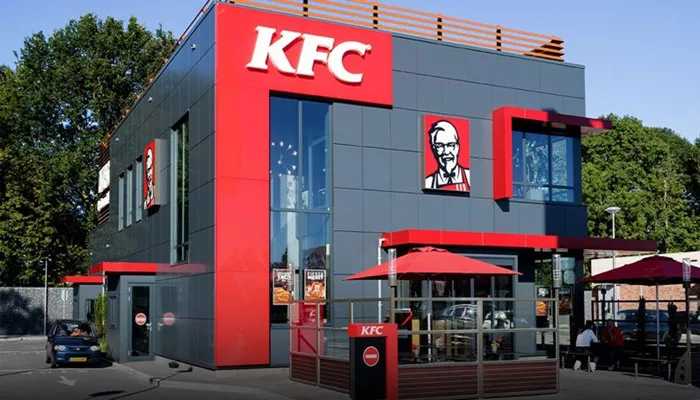KFC, known for its signature fried chicken and iconic branding, has become a staple in the fast-food industry. Founded by Colonel Harland Sanders in the 1930s, KFC has grown into one of the largest and most recognizable fast-food chains globally. This article delves into the franchise model of KFC, exploring its extensive reach and the countries with the most KFC franchises.
The Rise of KFC
KFC’s journey began when Colonel Sanders started selling fried chicken from his roadside restaurant in Corbin, Kentucky.
His unique recipe of 11 herbs and spices quickly gained popularity. In 1952, Sanders opened the first KFC franchise in Salt Lake City, Utah, marking the beginning of a rapid expansion that would see KFC become a global phenomenon. By the mid-1960s, KFC had opened outlets in Canada, the UK, Mexico, and Jamaica, establishing itself as one of the first American fast-food chains to expand internationally.
The franchising model was pivotal to KFC’s success. By allowing independent operators to run their restaurants under the KFC brand, Sanders could rapidly increase the number of outlets without bearing all the financial risks himself. This model not only facilitated growth but also ensured that each franchise maintained consistent quality and service standards.
Global Presence of KFC
As of 2024, KFC operates over 30,000 locations across more than 150 countries. The brand’s ability to adapt its menu to local tastes has played a significant role in its global success. For instance, in India, KFC introduced vegetarian options and revamped its marketing strategy to cater to local preferences.
Leading Countries with KFC Franchises
China
China is home to KFC’s largest market, with approximately 4,563 outlets. The brand has successfully integrated into Chinese culture by offering localized menu items while maintaining its core offerings. The rapid urbanization and rising middle class in China have contributed to KFC’s explosive growth in the region.
United States
The United States remains a significant market for KFC with around 4,000 locations. Despite facing intense competition from other fast-food chains, KFC has maintained its relevance through innovative marketing strategies and menu diversification.
India
Since entering India in 1998, KFC has expanded to over 800 outlets across various cities. The brand’s strategy includes introducing new products tailored to Indian tastes while promoting family dining experiences.
SEE ALSO: When Does Wendy’s Start Serving Frosty’s
Indonesia
Indonesia has seen substantial growth for KFC with over 700 restaurants. The brand has become popular among young consumers due to its marketing campaigns and menu adaptations that resonate with local preferences.
Mexico
With more than 600 outlets, Mexico is another key market for KFC. The brand has successfully positioned itself as a family-friendly dining option while offering menu items that appeal to Mexican consumers.
Philippines
The Philippines boasts over 400 KFC outlets. The brand has tailored its offerings to include rice meals and local flavors, which have been well-received by Filipino customers.
South Africa
South Africa is home to over 900 KFC outlets. The brand’s success can be attributed to its effective marketing strategies and adaptation of its menu to include local favorites.
Franchise Model And Operations
KFC operates primarily through a franchise model, where independent operators run their restaurants under the KFC brand guidelines. This model allows for rapid expansion while ensuring consistency across locations.
Franchise Requirements
To become a KFC franchisee, potential owners must meet specific financial criteria:
An initial franchise cost of approximately $45,000.
A net worth requirement of at least $1.5 million.
A cash requirement of around $750,000.
Ongoing royalty fees ranging from 4% to 5% of sales.
Training And Support
KFC provides extensive training and support for its franchisees:
Initial training includes ten weeks of on-the-job training.
Ongoing support includes marketing assistance, operational guidance, and access to proprietary software systems.
Franchisees also participate in national media campaigns that enhance brand visibility.
Menu Diversification
KFC’s menu has evolved significantly since its inception. While it is renowned for its fried chicken buckets, the chain now offers a variety of items including chicken sandwiches, wraps, salads, and desserts. This diversification helps attract a broader customer base and keeps the brand relevant amid changing consumer preferences.
Regional Menu Adaptations
KFC’s ability to customize its menu according to regional tastes is a key factor in its global success:
In India, vegetarian options like paneer wraps were introduced alongside traditional chicken offerings.
In Japan, seasonal items such as Christmas chicken meals have become popular.
In China, rice meals and local flavors are integrated into the menu.
Conclusion
KFC’s journey from a small roadside restaurant in Kentucky to one of the world’s leading fast-food chains is a testament to effective franchising strategies and adaptability in diverse markets. With thousands of franchises across multiple countries, KFC continues to thrive by catering to local tastes while maintaining its core identity centered around quality fried chicken.
The brand’s commitment to innovation in both menu offerings and marketing ensures that it remains a favorite among consumers globally. As it continues expanding into new territories and adapting to changing market dynamics, KFC stands as a prime example of successful franchising in the fast-food industry.

